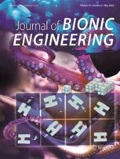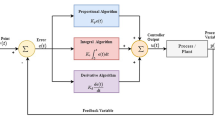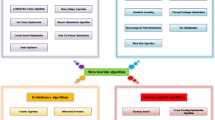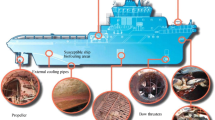Abstract
Bionic robotic fish has a significant impact on design and control of innovative underwater robots capable of both rapid swimming and high maneuverability. This paper explores the relationship between Central Pattern Generator (CPG) based locomotion control and energy consumption of a miniature self-propelled robotic fish. To this end, a real-time energy measurement system compatible with the CPG-based locomotion control is firstly built on an embedded system. Then, tests are conducted on the untethered actual robot. The results indicate that different CPG feature parameters involving amplitude, frequency, and phase lag play distinct roles in energy consumption under different swimming gaits. Specifically, energy consumption is positively correlated with the changes in the amplitude and frequency of CPGs, whereas the phase lag of CPGs has little influence on the energy consumption. It may offer important inspiration for improving energy efficiency and locomotion performance of versatile swimming gaits.
Similar content being viewed by others
References
Fish F E. Advantages of natural propulsive systems. Marine Technology Society Journal, 2013, 47, 37–44.
Tan X. Autonomous robotic fish as mobile sensor platforms: Challenges and potential solutions. Marine Technology Society Journal, 2011, 45, 31–40.
Yu J, Wen L, Ren Z. A survey on fabrication, control, and hydrodynamic function of biomimetic robotic fish. Science China Technological Sciences, 2017, 60, 1365–1380.
Kwak B, Bae J. Toward fast and efficient mobility in aquatic environment: A robot with compliant swimming appendages inspired by a water beetle. Journal of Bionic Engineering, 2017, 14, 260–271.
Liang J, Wang T, Wen L. Development of a two-joint robotic fish for real-world exploration. Journal of Field Robotics, 2011, 28, 70–79.
F. Shen, C. Wei, Z. Cao, C. Zhou, D. Xu, W. Zhang. Water quality monitoring system based on robotic dolphin. Proceedings of World Congress on Intelligent Control and Automation, Taipei, China, 2011, 243–247.
Yan Q, Wang L, Liu B, Yang J, Zhang S. A novel implementation of a flexible robotic fin actuated by shape memory alloy. Journal of Bionic Engineering, 2012, 9, 156–165.
Hu T, Low K H, Shen L, Xu X. Effective phase tracking for bioinspired undulations of robotic fish models: A learning control approach. IEEE/ASME Transactions on Mechatronics, 2014, 19, 191–200.
Ryuh Y S, Yang G H, Liu J, Hu H. A school of robotic fish for mariculture monitoring in the sea coast. Journal of Bionic Engineering, 2015, 12, 37–46.
Zhang S, Qian Y, Liao P, Qin F, Yang J. Design and control of an agile robotic fish with integrative biomimetic mechanisms. IEEE/ASME Transactions on Mechatronics, 2016, 21, 1846–1857.
Wu Z, Liu J, Yu J, Fang H. Development of a novel robotic dolphin and its application to water quality monitoring. IEEE/ASME Transactions on Mechatronics, 2017, 22, 2130–2140.
Yu J, Wang K, Tan M, Zhang J. Design and control of an embedded vision guided robotic fish with multiple control surfaces. The Scientific World Journal, 2014, 2014, 631296.
Ijspeert A J. Central pattern generators for locomotion control in animals and robots: A review. Neural Networks, 2008, 21, 642–653.
Yu J, Tan M, Chen J, Zhang J. A survey on CPG-inspired control models and system implementation. IEEE Transactions on Neural Networks and Learning Systems, 2014, 25, 441–456.
Zhang D, Hu D, Shen L, Xie H. A bionic neural network for fish-robot locomotion. Journal of Bionic Engineering, 2006, 3, 187–194.
Zhang D, Hu D, Shen L, Xie H. Design of an artificial bionic neural network to control fish-robot’s locomotion. Neurocomputing, 2008, 71, 648–654.
Wu Z, Yu J, Tan M, Zhang J. Kinematic comparison of forward and backward swimming and maneuvering in a self-propelled sub-carangiform robotic fish. Journal of Bionic Engineering, 2014, 11, 199–212.
Li L, Wang C, Xie G. A general CPG network and its implementation on the microcontroller. Neurocomputing, 2015, 167, 299–305.
Yu J, Wu Z, Wang M, Tan M. CPG network optimization for a biomimetic robotic fish via PSO. IEEE Transactions on Neural Networks and Learning Systems, 2016, 27, 1962–1968.
Staffa M, Perfetto D, Rossi S. Engineering central pattern generated behaviors for the deployment of robotic systems. Neurocomputing, 2015, 170, 98–112.
Ge Q, Shao T, Yang Q, Shen X, Wen C. Multisensor nonlinear fusion methods based on adaptive ensemble fifth-degree iterated cubature information filter for biomechatronics. IEEE Transactions on Systems, Man, and Cybernetics: Systems, 2016, 46, 912–925.
Ge Q, Shao T, Chen S, Wen C. Carrier tracking estimation analysis by using the extended strong tracking filtering. IEEE Transactions on Industrial Electronics, 2017, 64, 1415–1424.
Yu J, Chen S, Wu Z, Wang W. On a miniature free-swimming robotic fish with multiple sensors. International Journal of Advanced Robotic Systems, 2016, 13, 1–8.
Yu J, Wang L, Tan M. Geometric optimization of relative link lengths for biomimetic robotic fish. IEEE Transactions on Robotics, 2007, 23, 382–386.
Wang W, Gu D, Xie G. Autonomous optimization of swimming gait in a fish robot with multiple onboard sensors. IEEE Transactions on Systems, Man, and Cybernetics: Systems, 2017, 1–13 (Article in press, https://doi.org/10.1109/TSMC.2017.2683524).
Li L, Lv J, Chen W, Wang W, Zhang X, Xie G. Application of Taguchi method in the optimization of swimming capability for robotic fish. International Journal of Advanced Robotic Systems, 2016, 13, 102.
Deng F, Guo S, Zhou R, Chen J. Sensor multifault diagnosis with improved support vector machines. IEEE Transactions on Automation Science and Engineering, 2017, 14, 1053–1063.
Ji Z, Yu H. A new perspective to graphical characterization of multiagent controllability. IEEE Transactions on Cybernetics, 2017, 47, 1471–1483.
Othman A, Belda K, Burget P. Physical modelling of energy consumption of industrial articulated robots. Proceedings of 15th International Conference on Control, Automation and Systems, Busan, Korea, 2015, 784–789.
Acknowledgment
This work was supported by the National Natural Science Foundation of China (Nos. 61725305, 61573226, 61763042, 61663040) and the Beijing Natural Science Foundation (Nos. 4161002, 4164103).
Author information
Authors and Affiliations
Corresponding author
Rights and permissions
About this article
Cite this article
Yu, J., Chen, S., Wu, Z. et al. Energy Analysis of a CPG-controlled Miniature Robotic Fish. J Bionic Eng 15, 260–269 (2018). https://doi.org/10.1007/s42235-018-0020-1
Published:
Issue Date:
DOI: https://doi.org/10.1007/s42235-018-0020-1




